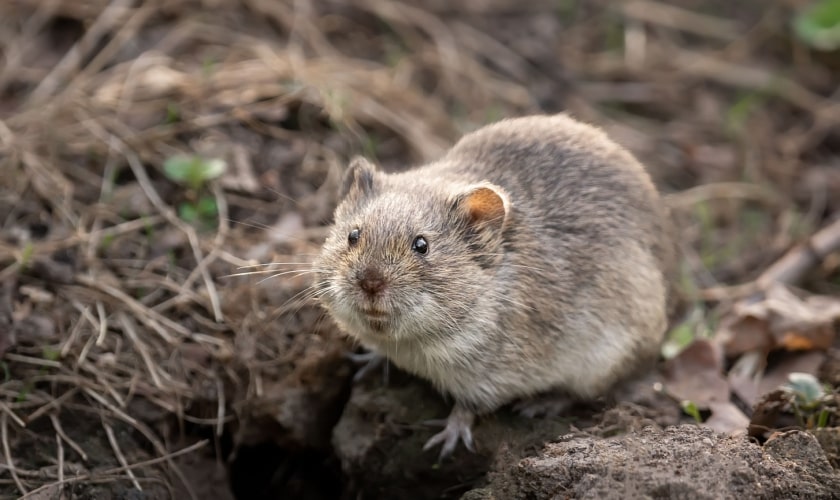Professional Methods for Vole Control and Avoidance
Comprehensive Overview to Effective Vole Insect Control: Invasion Recognition and Treatment Methods
In the world of efficient insect control, vole infestations pose an one-of-a-kind difficulty that requires a critical approach. These tiny rodents, commonly mistaken for mice, can damage gardens, grass, and plants if left untreated. Recognizing the indications of vole visibility and applying targeted treatment methods are essential parts of a successful pest monitoring plan. By exploring the nuances of vole actions, comprehending vital indicators of invasion, and assessing a series of control alternatives, one can create a detailed method to deal with these evasive pests.
Comprehending Vole Actions
Vole habits is characterized by their delving practices and rapid recreation prices, making them a challenging insect to control effectively. These small rats generally develop elaborate tunnel systems underground, utilizing them for sanctuary, food storage space, and transportation. Voles are herbivores, consuming a range of plants, roots, light bulbs, and turfs, which can create significant damages to gardens, orchards, and yards. Their fast reproductive price additional makes complex control efforts, with women with the ability of creating numerous litters in a solitary year, each containing numerous offspring.
Voles are most energetic throughout the early morning and evening hours, investing most of their time foraging for food. Their tunneling practices not just interrupt grass and yards yet also make them testing to eliminate and find. Recognizing vole habits is important for efficient bug control strategies. By recognizing their burrow places, checking feeding areas, and carrying out targeted control approaches, such as capturing or environment adjustment, vole infestations can be handled effectively.
Signs of Vole Invasion

Avoidance Methods
Carrying out efficient avoidance strategies is essential in reducing vole problems and protecting plant life from their harmful feeding habits. To stop vole invasions, it is important to start by removing prospective food sources and sanctuary.
Consistently checking the building for signs of vole activity, such as runways and tunnel openings, is important for very early discovery and timely action. Consider utilizing go to website catches or repellents strategically placed near their pathways if vole task is thought. Using all-natural killers like owls or snakes can also help keep vole populaces in check. By carrying out a combination of these prevention garden enthusiasts, techniques and homeowners can efficiently protect their plants from vole damages.
Non-Lethal Control Techniques
To successfully handle vole populations while prioritizing gentle approaches, non-lethal control approaches use sensible services for reducing vole damage in landscapes and yards. These obstacles can be buried at least 12 inches curved and deep at a 90-degree angle to protect against voles from tunneling beneath.

Lethal Control Options
One efficient method for dealing with vole invasions in landscapes and yards includes the strategic use lethal control options. When confronted with a serious vole problem that non-lethal approaches have fallen short to have, implementing dangerous control steps comes to be essential. One generally employed deadly control alternative is making use of breeze traps. These catches are made to quickly and humanely kill voles upon activation, making them a prominent option for many gardeners and landscaping companies. To increase the performance of you could try this out breeze catches, it is advised to put them in areas where vole activity is high, such as along runways or near burrow entryways. An additional lethal control choice is the usage of harmful baits especially created to target voles. vole lawn damage These baits include poison that is consumed by the voles, causing their eventual death. Caution has to be exercised when using harmful lures to protect against damage to non-target pets or pets. Generally, when utilizing lethal control options, it is necessary to do so properly and according to local guidelines to effectively handle vole infestations.
Conclusion
To conclude, effective vole parasite control requires a detailed understanding of vole habits, recognition of indications of infestation, execution of avoidance methods, and use of both non-lethal and dangerous control methods. By combining these techniques, people can successfully take care of vole populaces and protect their home from damage. It is very important to address vole infestations promptly to avoid more issues and decrease the impact on the surrounding atmosphere.
Given the intricate passage systems and rapid recreation prices characteristic of voles, recognizing the indications of vole problem comes to be essential in reliable parasite control. One of the key signs of vole presence is the existence of surface area paths or tracks in turf or snow, generally about 1-2 inches vast, produced as voles travel between their burrows and food sources.To efficiently take care of vole populations while prioritizing humane approaches, non-lethal control strategies use practical options for minimizing vole damage in yards and landscapes.One effective technique for dealing with vole problems in yards and landscapes involves the tactical use of lethal control options. vole lawn damage.In final thought, effective vole bug control requires a comprehensive understanding of vole actions, identification of signs of infestation, execution of prevention methods, and use of both non-lethal and dangerous control techniques